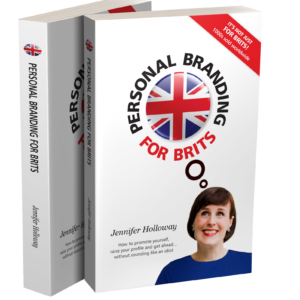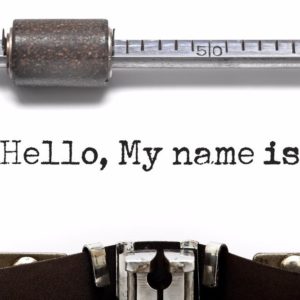

Is Your Network About Quantity or Quality?
How many LinkedIn messages do you get where someone’s inviting you to join their network? And of those, how many do you accept?
There are two schools of thought on how to approach your LinkedIn network:
- The Quantity Approach: Connect to as many people as possible, because when you add in those people’s connections, it’s opening you up to an even larger network. This can help if your aim is to raise your profile far and wide.
- The Quality Approach: Connect to those people who you know, you can see value in knowing or who show you the value in connecting. This can help if you want to build a ‘tribe’ of people you can properly interact with.
If you’re following the first approach, I’m going to guess you click ‘Accept’ to every single invitation you get.
Me…I follow the second approach. I prefer to look through my network of contacts and think ‘I know who they are’ or at the very least ‘I don’t know them personally but there is a reason they’re there’.
It’s not that one approach is better than the other
It’s more about considering what you want to achieve.
My business is all about people buying people. So what I want to achieve is a network that, in the main, is comprised of personal connections – ones where we’ve connected as people, not as an anonymous profile.
As a result, I’ve come up with a few ‘rules’ for who I allow into my network that I thought I’d share with you. You may or may not want to follow them, but at the very least I hope they make you stop and think who’s joining your gang and why.
Rule 1: The standard text won’t cut it
The quickest way to sift through my LinkedIn invitations is to start by ignoring those where the person has done nothing to personalise it ie it still says the standard text ‘I’d like to add you to my network’.
The only time I consider accepting those invitations is if they’re from someone I’ve recently had contact with. For instance, they may have attended a presentation I delivered, or work for one of my client companies and heard about me on the internal grapevine.
Interestingly, I’ve seen a number of people over the years say they’ve done experiments with their invitations and discovered they get a higher hit rate with the standard text. That’s great if you’re in the quantity camp, but if like me you want quality connections, it’s not the way to go.
Rule 2: Different wording doesn’t always mean personal
Having ignored the standard text, I then read the invitations where the wording has been changed. But even then, it’s easy to spot the ones where there is zero personalisation.
They say things like, ‘Since you are a person I trust, I’d like to add you to my network on LinkedIn.’ This one astounds me because trust is such a weighty thing, why would you give it to me when we’ve not even met?
Or the more salesy type that read, ‘If you’re struggling to build your business I can help.’ (No thanks mate because I’m not struggling to build my business. I’ve been established for over a decade, have clients including FTSE100 companies and authored a best-selling book – which you’d know if you’d taken three seconds to read my profile.)
The exception to this was an invitation I received where its honesty won me over. It said, “I won’t pretend we know each other – we don’t – but you seem an interesting person with an interesting business. I’d like it if you were part of my network. Hopefully, when you check me out, you’ll feel the same.
Here’s a top tip
If you really want to make sure someone has read your profile do what copywriter John Espirian does – ask them to prove it. His summary ends with the wording: ‘Please write “pineapple” in your invitation. This tells me you’ve read my profile.’
Rule 3: There’s a reason for connecting
This is an obvious follow-on from the other two rules. The invitations that get my attention and I am more likely to accept are the ones where a) it’s been personalised b) the message is freshly typed and not a cut-and-paste job and (this is the real thing that swings it) c) I’m offered a reason for connecting.
It might be the person mentions they were talking to a mutual connection and my name came up, which led them to look at my profile. It might be they’ve seen a post I’ve done and were interested in connecting to read future posts. Or, as I recently had, it might be that we went to primary school together. (That one led to an exchange of messages where the person sent me our class photo from 1982 – which was a real blast from the past!)
Here’s an extra tip
If you’re a proponent of the quality approach and want to dissuade any old chancer from sending invitations, you can make it more difficult for them by changing your primary profile button from ‘Connect’ to ‘Follow’. (This article from David Petherick tells you how.)
What ‘Follow’ does is offers the person the chance to have your posts, articles and activity in their feed, but not have to be part of your network. I’ve altered mine and it’s reduced the flood of invitations to my inbox (and improved the quality of those that do appear).
What are your rules for accepting or ignoring LinkedIn invitations? Or what do you do to personalise your invitations to really connect with the other person? All top tips welcome with a comment below. Thank you!







100% agree with your approach to LinkedIn connections for someone whose business is based on people buying people; my general approach is to connect only with people who I am able to call for a chat or from whom I would take such a call. Very grateful for your extra tip! I have just altered my profile from ‘Connect’ to ‘Follow’.
Always happy to share a top tip!
Hello Jennifer
I have an extra rule for LinkedIn requests, spelling my name correctly. Attention to detail is so important to me that if someone starts with Emma it’s just not going to work out. Who knows how many opportunities of a lifetime I’ve missed by (politely, of course) declining invitations or opportunities however I’ve experienced some pretty great ones too. People getting in touch to tell me I’ve made a mistake in my name is always interesting though and definitely makes them stand out.
Emma-louise
The fact you hyphenate your name should at least give them a clue it’s all one thing – you’re not just Emma. As you say though, it helps you sort the wheat from the chaff (a very old phrase).